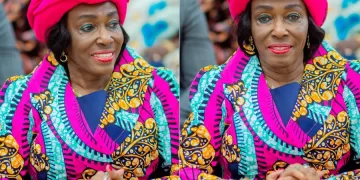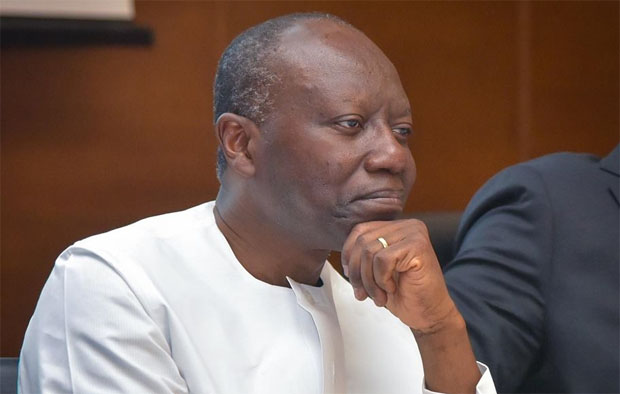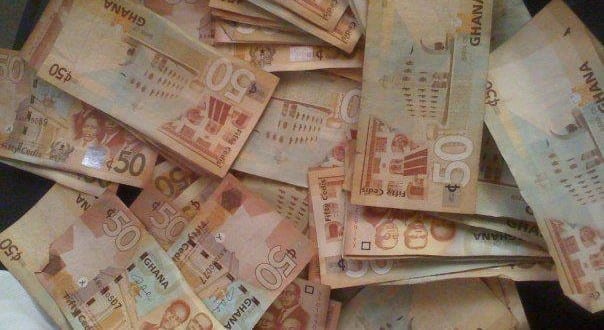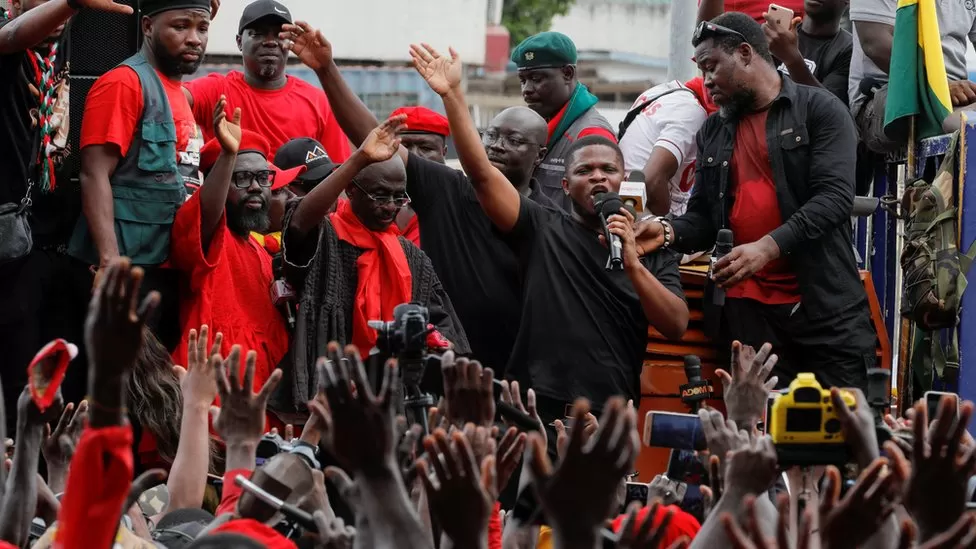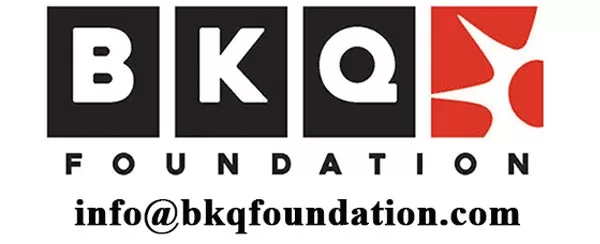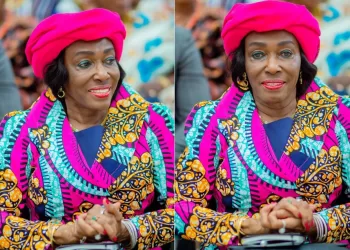 The monetary policy committee of the Bank of Ghana has maintained the policy rate for the second time at 16%.
Governor of the central bank, Dr. Ernest Addison attributed the decision to threats posed by energy related debt and weak inflation outlook triggered by exchange rate volatility.
The bank’s key lending rate to commercial banks was first reduced from 17 per cent to 16 per cent on January 28 this year. The rate was maintained on April 1.
The governor noted that inflation in advanced economies, including Ghana’s key trading partners, is gradually inching up as a result of rising crude oil prices, even though core inflation remains relatively subdued due to sluggish wage growth.
“On the inflation outlook, the Committee noted that the recent exchange rate pass-through has slowed the disinflation process, leading to a slightly elevated inflation profile as shown in the latest forecasts. However, core inflation remains subdued and inflation expectations fairly anchored.”
According to Dr. Addison, the current account balance for the first quarter of 2019 registered a surplus of US$294.5 million, equivalent to 0.4 percent of GDP. This, he said, was on the back of an improved trade surplus of US$794.4 million (1.2% of GDP) and a net outflow of US$500 million in the services and income account.
“These developments improved Ghana’s Gross International Reserves (GIR) to US$9.9 billion (equivalent to 5.1 months of import cover) as at end-March 2019 from US$7.0 billion (equivalent to 3.6 months of import cover) at the end of December 2018.
“As at end of April 2019, the Gross International Reserves was US$9.3 billion (4.7 months import cover), largely on account of energy-related debt payments and higher obligations associated with externally held domestic debt payments.”
Touching on the execution of the budget, he said provisional data for the first quarter of 2019, showed an overall deficit (on cash basis) of 1.8 percent of GDP against the target 4 of 1.4 percent of GDP and a primary deficit of 0.8 percent of GDP compared to a targeted deficit of 0.3 percent of GDP.
The governor attributed the deficit to over projected domestic revenue collections.
“Over the quarter, total revenue and grants amounted to GH¢10.1 billion compared with the programmed target of GH¢12.4 billion. Total expenditures was GH¢16.5 billion, slightly below the target of GH¢17.3 billion, and representing a 37.7 percent annual growth,” he observed.
Public Debt
As a result, the stock of public debt rose to 57.5 percent of GDP (GH¢198.0 billion) at the end of March 2019 compared with 49.5 percent of GDP (GH¢147.9 billion) at the end of March 2018. Of the total debt stock, GH¢11.0 billion representing 3.2% of GDP was bonds issued to support the financial sector clean-up
Source: 3news.com | Ghana]]>
The monetary policy committee of the Bank of Ghana has maintained the policy rate for the second time at 16%.
Governor of the central bank, Dr. Ernest Addison attributed the decision to threats posed by energy related debt and weak inflation outlook triggered by exchange rate volatility.
The bank’s key lending rate to commercial banks was first reduced from 17 per cent to 16 per cent on January 28 this year. The rate was maintained on April 1.
The governor noted that inflation in advanced economies, including Ghana’s key trading partners, is gradually inching up as a result of rising crude oil prices, even though core inflation remains relatively subdued due to sluggish wage growth.
“On the inflation outlook, the Committee noted that the recent exchange rate pass-through has slowed the disinflation process, leading to a slightly elevated inflation profile as shown in the latest forecasts. However, core inflation remains subdued and inflation expectations fairly anchored.”
According to Dr. Addison, the current account balance for the first quarter of 2019 registered a surplus of US$294.5 million, equivalent to 0.4 percent of GDP. This, he said, was on the back of an improved trade surplus of US$794.4 million (1.2% of GDP) and a net outflow of US$500 million in the services and income account.
“These developments improved Ghana’s Gross International Reserves (GIR) to US$9.9 billion (equivalent to 5.1 months of import cover) as at end-March 2019 from US$7.0 billion (equivalent to 3.6 months of import cover) at the end of December 2018.
“As at end of April 2019, the Gross International Reserves was US$9.3 billion (4.7 months import cover), largely on account of energy-related debt payments and higher obligations associated with externally held domestic debt payments.”
Touching on the execution of the budget, he said provisional data for the first quarter of 2019, showed an overall deficit (on cash basis) of 1.8 percent of GDP against the target 4 of 1.4 percent of GDP and a primary deficit of 0.8 percent of GDP compared to a targeted deficit of 0.3 percent of GDP.
The governor attributed the deficit to over projected domestic revenue collections.
“Over the quarter, total revenue and grants amounted to GH¢10.1 billion compared with the programmed target of GH¢12.4 billion. Total expenditures was GH¢16.5 billion, slightly below the target of GH¢17.3 billion, and representing a 37.7 percent annual growth,” he observed.
Public Debt
As a result, the stock of public debt rose to 57.5 percent of GDP (GH¢198.0 billion) at the end of March 2019 compared with 49.5 percent of GDP (GH¢147.9 billion) at the end of March 2018. Of the total debt stock, GH¢11.0 billion representing 3.2% of GDP was bonds issued to support the financial sector clean-up
Source: 3news.com | Ghana]]>
BoG maintains policy rate for the second time at 16%
Reading Time: 3 mins read
Recent Posts
- Seidu Agongo launches month-long Ramadan donations to mothers
- IWD: You are powerful, capable – Konadu Agyeman-Rawlings celebrates women
- Anas thanks Emir of Gombe for naming a Centre at North Eastern University after him
- Anas Aremeyaw Anas Multimedia Centre Commissioned at North Eastern University, Gombe
- Amend Transition Act to reflect current governance structure – Benjamin Quashie
- Evidence abounds that lithovit is efficacious: A-G defends withdrawal of Opuni-Agongo case
- Full Text: Check Attorney-General’s justification for discontinuing high-profile cases
- OSP declares Ken Ofori-Atta wanted in multiple corruption cases
Popular Stories
-
IWD: You are powerful, capable – Konadu Agyeman-Rawlings celebrates women
-
A Voice from the Village Talkative: Why Prez Akufo-Addo must buy brand new cars
-
Stephen Hawking dies aged 76
-
Distraction: Ursula explains why govt is ‘speaking’ for Kelni GVG
-
Western North Region gets ‘independence’ with overwhelming 99.52% YES votes
@2023 – Newstitbits.com. All Rights Reserved.



